As a newbie knitter, I didn’t understand the point of a garter tab cast on. I tried it a few times, got tangled up, and decided it didn’t matter that much. For the next decade or so, I just used my usual long-tail method to cast on for my shawls and then kept knitting.
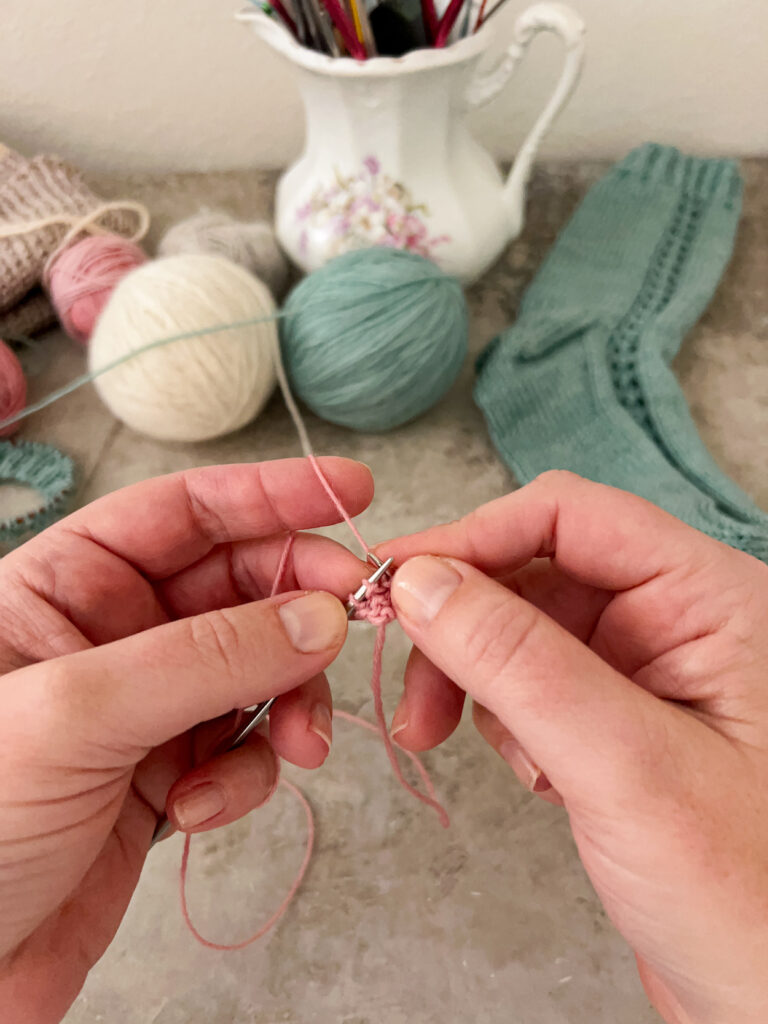
But the thing is, now that I look at those shawls with a more trained eye, I can spot the issue at my cast-on edge. If you’re knitting a shawl pattern from the top down and it has garter ridges on the sides, but you don’t use a garter tab cast on, there will be a bit of a gap at the top of your shawl. It’s not the end of the world, but it also doesn’t look as neat as it could.
In today’s blog post, we’ll be exploring when you should use consider using the garter tab cast on, when it doesn’t matter, and two different ways to work that cast on for different kinds of shawls. Remember, as with all knitting advice, you’re free to take what works for you and leave what doesn’t!
When to Use a Garter Tab Cast On and When It Doesn’t Matter
Okay, first things first. When should you use this cast-on method? The short answer is that it depends in large part on the type of shawl you’re knitting.
This is a good cast-on for any shawls knit from the top down, like certain triangular shawl styles and some crescent shawls, where there is also a garter stitch border along the top edge of the shawl. These shawls grow from the center downward and outward, so when you cast on, you’ll be casting on with a small number of stitches at the very middle point of your shawl.
If you’re not knitting a top-down shawl, a garter tab cast on is less useful. That’s because, for shawls that grow from one corner outward, the edge won’t have a gap in the middle where you cast on your stitches.
Here’s a closer look at two shawls, below. The shawl on the left has a garter tab cast on in the middle, which you can kind of see if you look very carefully. The shawl on the right is a crescent shawl that is also knit from the center top outward, but I didn’t use a garter tab cast on. You can see the gap between the garter trim.
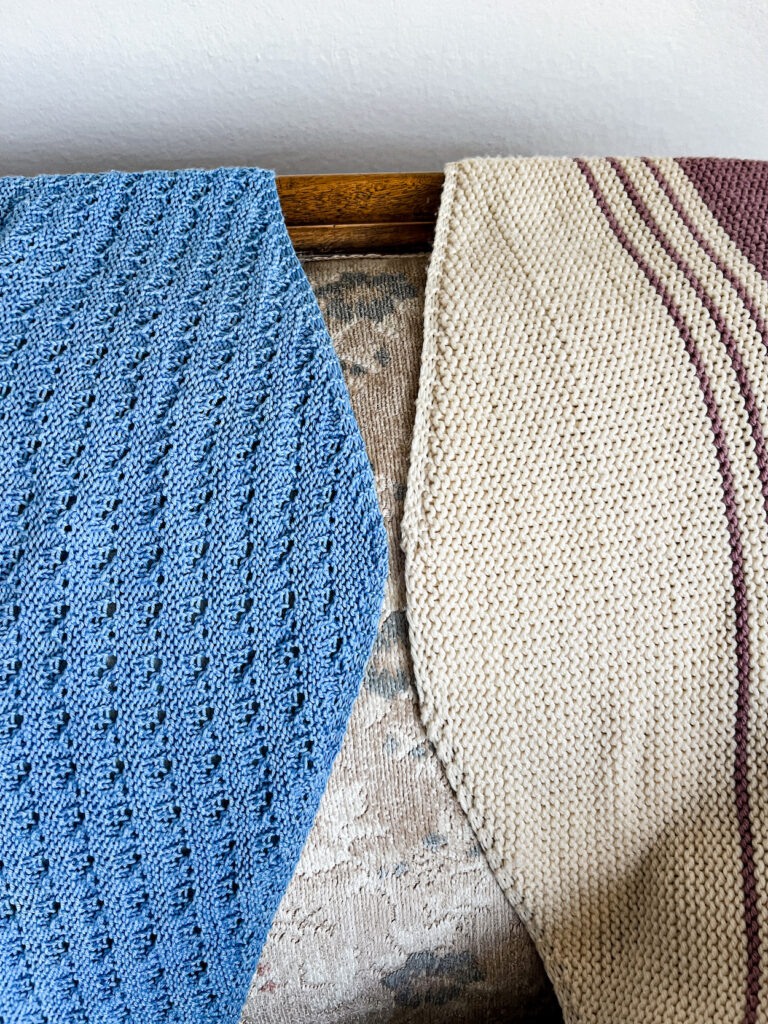
To understand more about different shawl shapes, be sure to check out my guide to different triangle shawls (with lots of free formulas for knitting your own).
How to Knit the Standard Garter Tab Cast On
Most knit shawls use the same garter tab cast on, which will leave you with nine stitches when you’re done.
1. Using your preferred cast on method, cast on three stitches.
2. Knit seven rows in garter stitch.
3. Leaving your three live stitches on your right hand knitting needle, turn your work 90 degrees so that the long edge is now facing upward.
4. With your right hand needle, pick up and knit three stitches along the side of the garter stitch rows.
5. Leaving your six live stitches on your right hand needle, turn your work 90 degrees again so that the cast-on edge is now facing upward.
6. Pick up and knit three stitches on the cast-on edge of the garter stitch rows. You’ll now have nine stitches.
This cast-on style is good for symmetrical triangle shawls with center increases because it sets up you really well for the rest of the shawl: three garter stitch edge stitches along the top, a section for increasing on the right, a section for increasing on the left, and the center stitch. The edge of the tab where you didn’t pick up stitches will form the center of the top of your shawl.
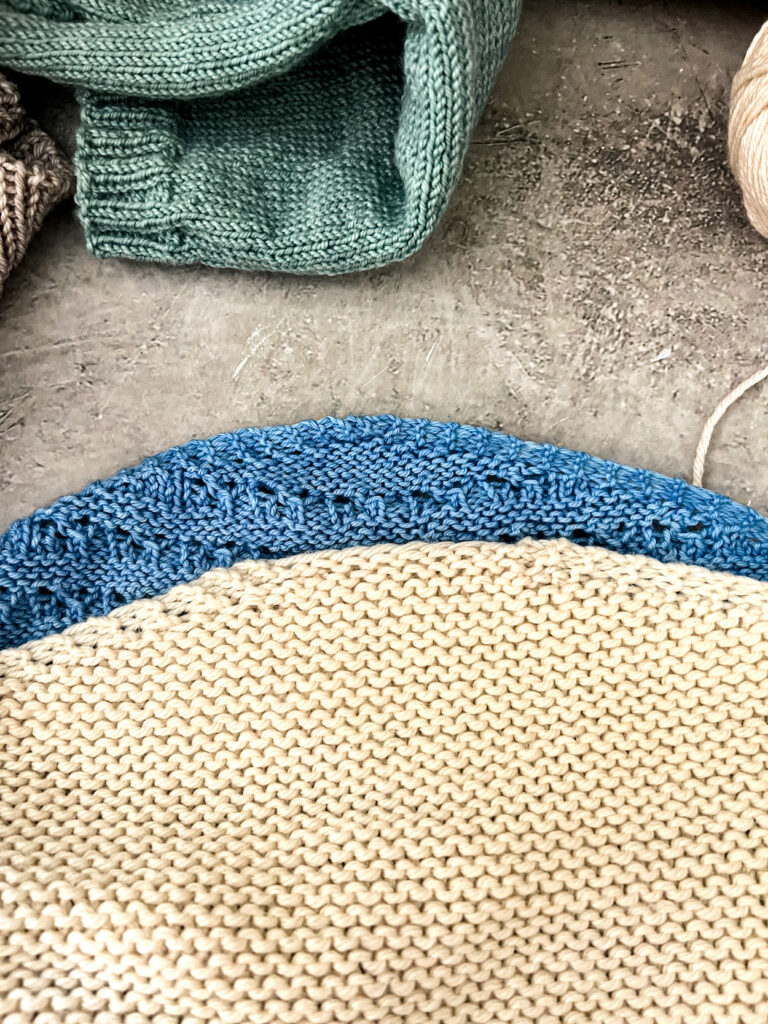
How to Knit My Modified Garter Tab Cast On for Crescent Shawls
When I knit crescent shawls with garter stitch borders, I still like to use a garter tab cast-on, but I work it slightly differently. Here’s what I do.
1. Using your preferred cast on method, cast on three stitches.
2. Knit five rows in garter stitch.
3. Leaving your three live stitches on your right hand knitting needle, turn your work 90 degrees so that the long edge is now facing upward.
4. With your right hand needle, pick up and knit two stitches along the side of the garter stitch rows.
5. Leaving your five live stitches on your right hand needle, turn your work 90 degrees again so that the cast-on edge is now facing upward.
6. Pick up and knit two stitches on the cast-on edge of the garter stitch rows. You’ll now have seven stitches.
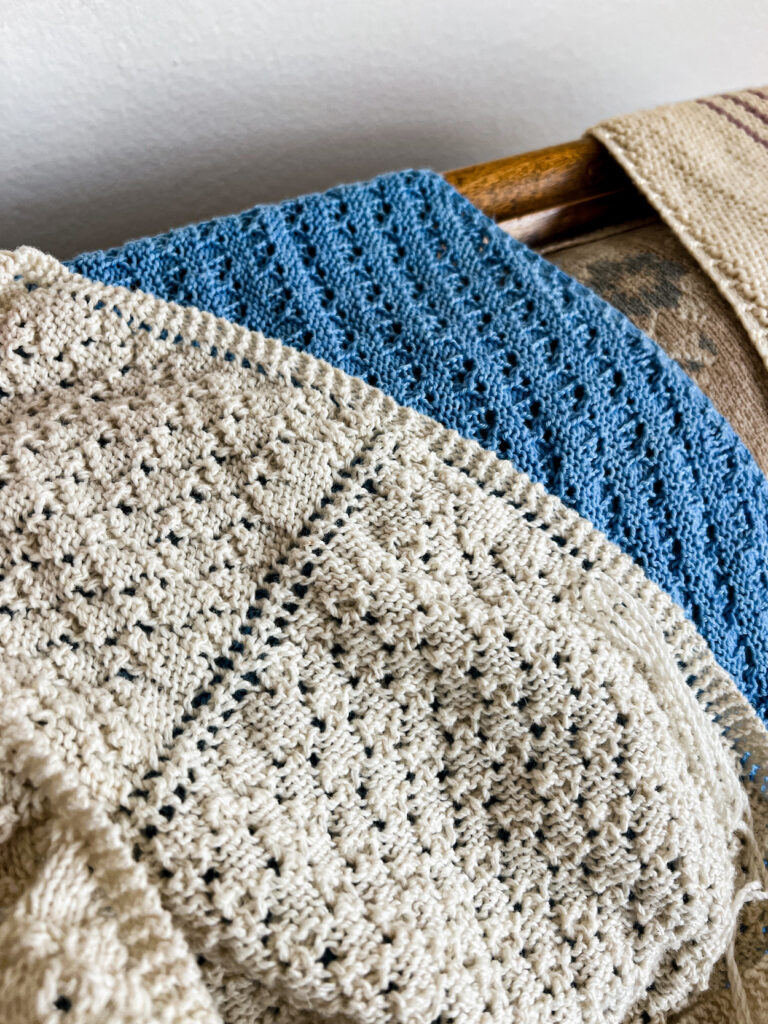
Why do I do things slightly differently for top-down crescents? Because crescent shawls have no center stitch with increases on either side. All of the increases are worked at the outside next to the garter edges while the body of the shawl continues uninterrupted. That means I can have a smaller garter tab cast on with just one stitch between the garter stitch edging, and then I increase from there.
This is ultimately a matter of personal preference, but I like this approach because even a good garter tab cast on is still not quite as seamless as an ordinary garter stitch edging. This helps minimize the size of the garter tab.
In the end, even if you don’t end up using this method, learning new techniques is a fun way to stretch our skills as knitters. I hope you’ll give this one a try and see how you like it!

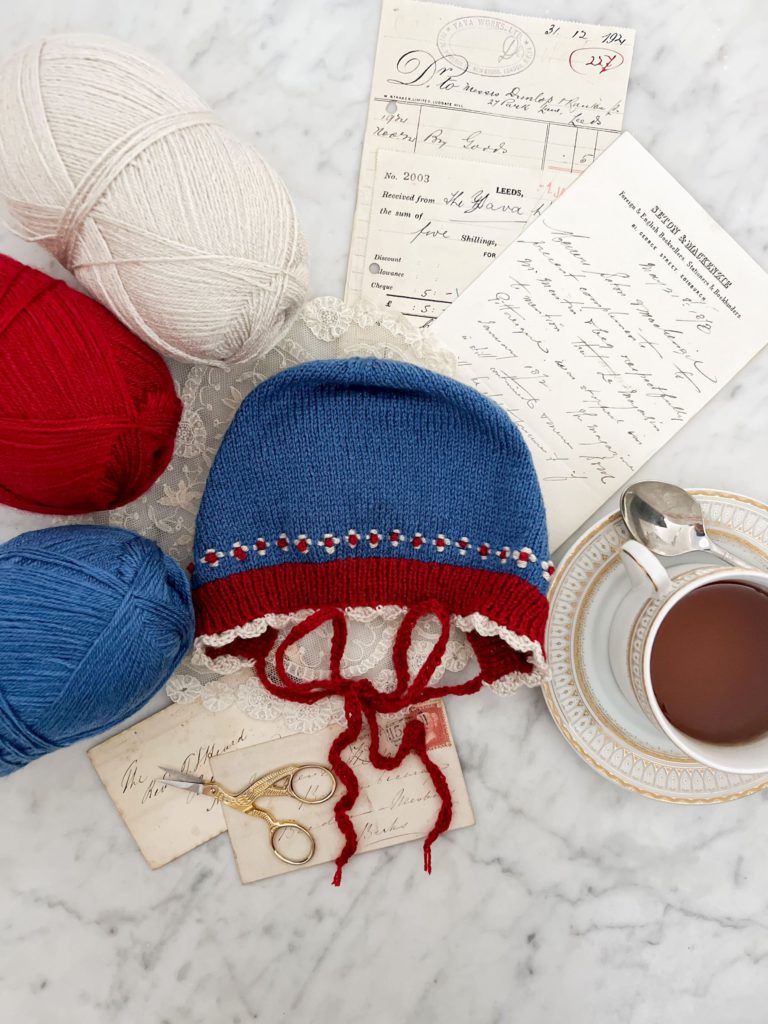
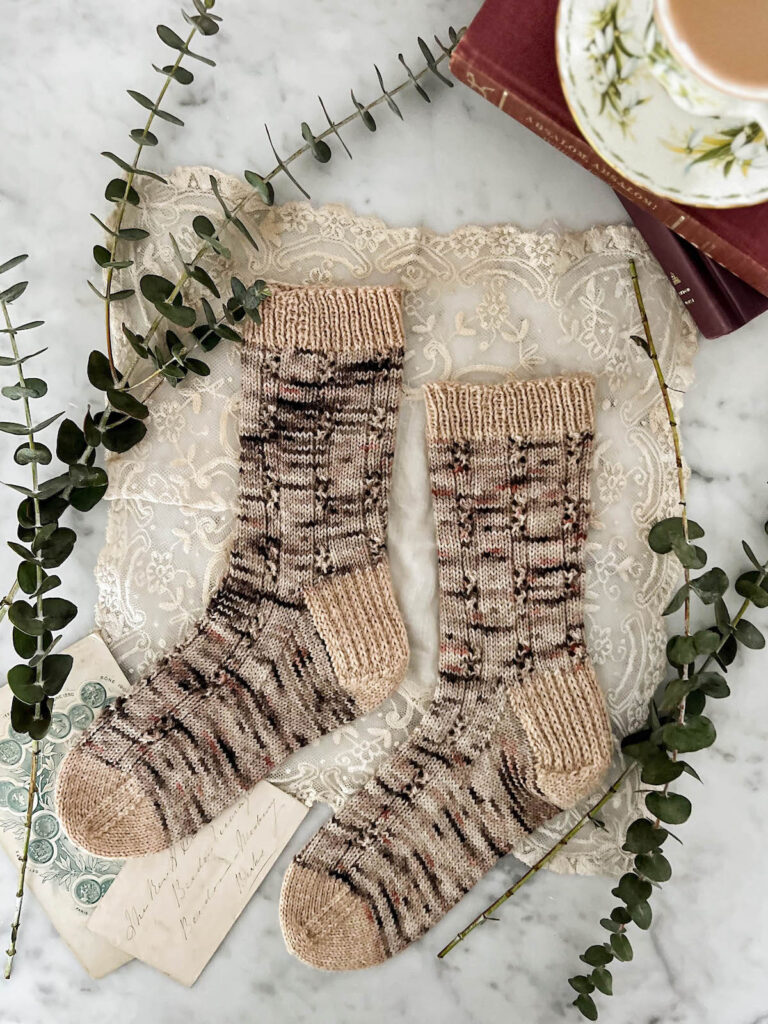
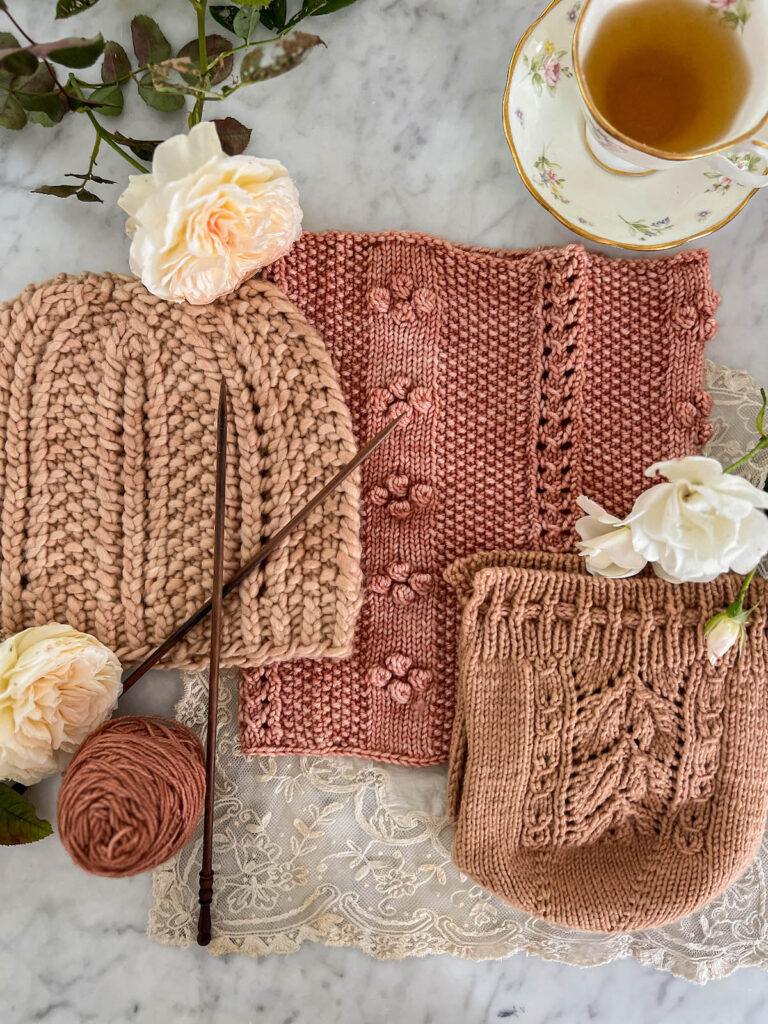
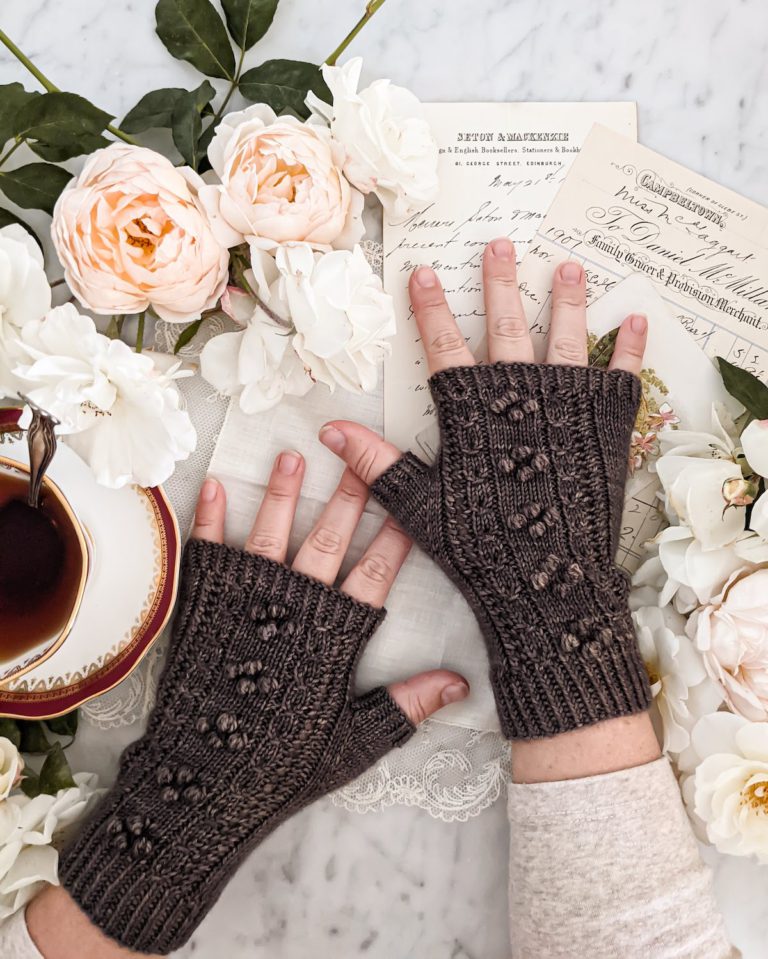
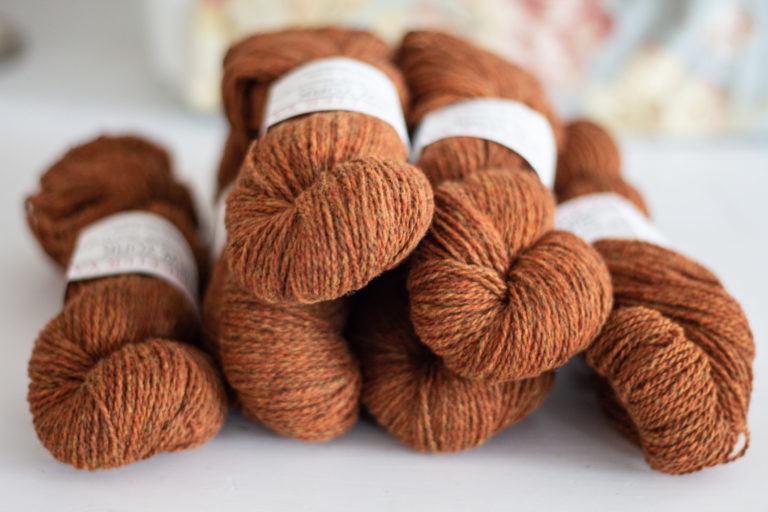
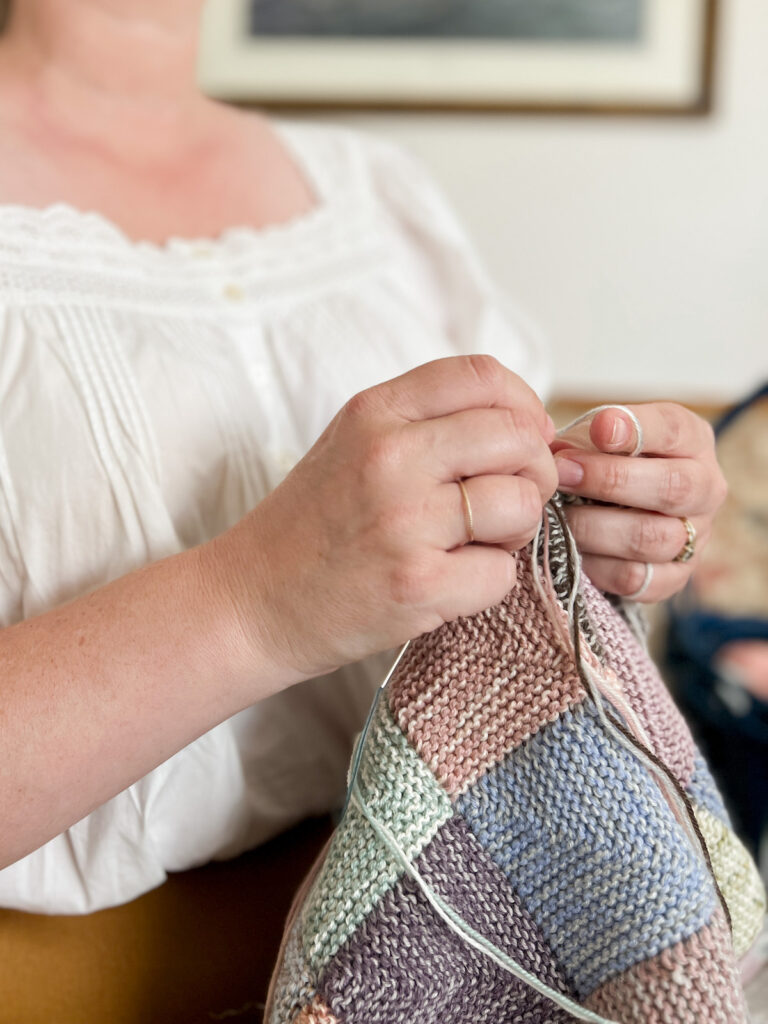
Hi again Lauren!
Thanks for those two tab cast-ons. I haven’t knitted a crescent shawl in quite some time but I remember feeling very frustrated with the ‘bump’ that the tab creates… I see that with your second method minimizes this to some extent for this type of shawl. I will try (after spinning, and whimsical socks!). Is there anyway to completely ‘disappear’ that bump?
Thanks!
Patricia